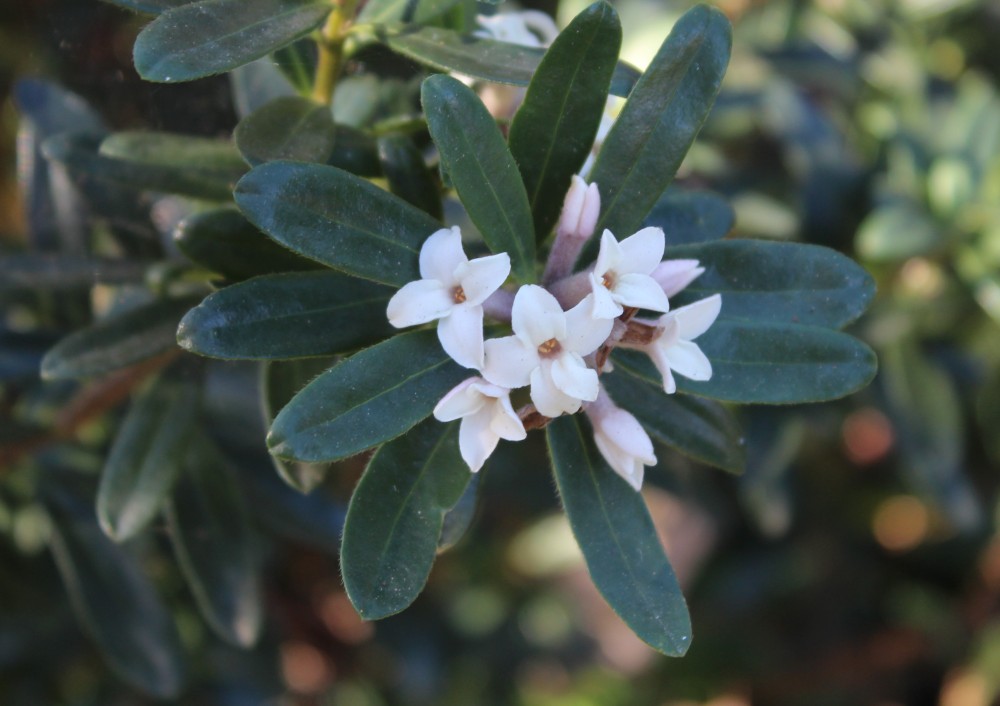Recent freezing temperatures have not been cold enough to disturb the exceptional late autumn floral display of camellias (below). That is about to change.
Temperatures dropping into the low teens by the week’s end will certainly damage flowers of camellias and the scattered blooms remaining on ‘Eternal Fragrance’ daphnes (Daphne x transatlantica ‘Blafra’, below). With unopened buds, there will typically be some flowers in any spell of mild weather through the winter, though these rarely last for more than a few days until the next freeze. Flowers of late autumn flowering mahonias are unlikely to suffer more than minor damage in the cold.
Already, I see gardens with blue tarps covering evergreens (I presume), and while this protects against damaging winter breezes, it also traps heat that increases temperature variations from a sunny afternoon to nighttime lows. Most always, the garden is best served by leaving well enough alone, though some marginally cold hardy plants will benefit from a thick cover of shredded leaves.
I have inspected hellebores (Helleborus) for signs of swelling flower buds, and ones that have flowered in late December in mild early winters show insignificant bud growth. This is the time when evergreen leaves of hellebores are best cut as low to the crown as possible, when flower buds do not get in the way. Rarely have I gotten around to this simple task, and too often leaves are left that obscure late winter flowers.
After flowering, leaves grow quickly in early spring. Of course, these do not show the hardships of evergreen foliage that has gone through weeks of freezing temperatures, and been covered by ice and snow. Perhaps I will get around to cutting the leaves before December is out, but certainly it will not be done in this week’s cold.
Dave — question regarding the trimming of leaves of Hellebores …. I have not had them for oh so long, so am not an expert at what is appropriate. I did not know it best to trim the leaves in December. I have carefully cut back old leaves in very early Spring, partly due to the attractiveness of the green leaves over the Winter in an otherwise dull bed of perennials long into hibernation. So by waiting, am I missing a more spectacular display of flowers? Are there other reasons for trimming back the leaves at this time of year? Will the new growth over the Winter produce even better greenery going into the next season? Thanks much for your gardening advice. I enjoy your curious prose and stunning gardens! Happy Holidays.
To my thinking, there is no good reason that leaves of hellebores should not be removed in late autumn, before flower buds become too prominent. When flower buds are small it is a simple matter to grab a handful of leaves and cut as close to the crown as possible. If leaves are not removed until just prior to flowering, more care is required so that buds are not damaged. In any case, it is not necessary that leaves be cut off at all, particularly with newer varieties that have been bred with more upright flowers that rise above leaves. The flowers of many older varieties face downwards, and if leaves are not removed flowers might be difficult to see.
So, there is every advantage, and no disadvantage to removing leaves in late autumn or early winter. Admittedly, I get around to this only once every four or five years, and usually I’m cutting leaves when flowers are beginning to open.